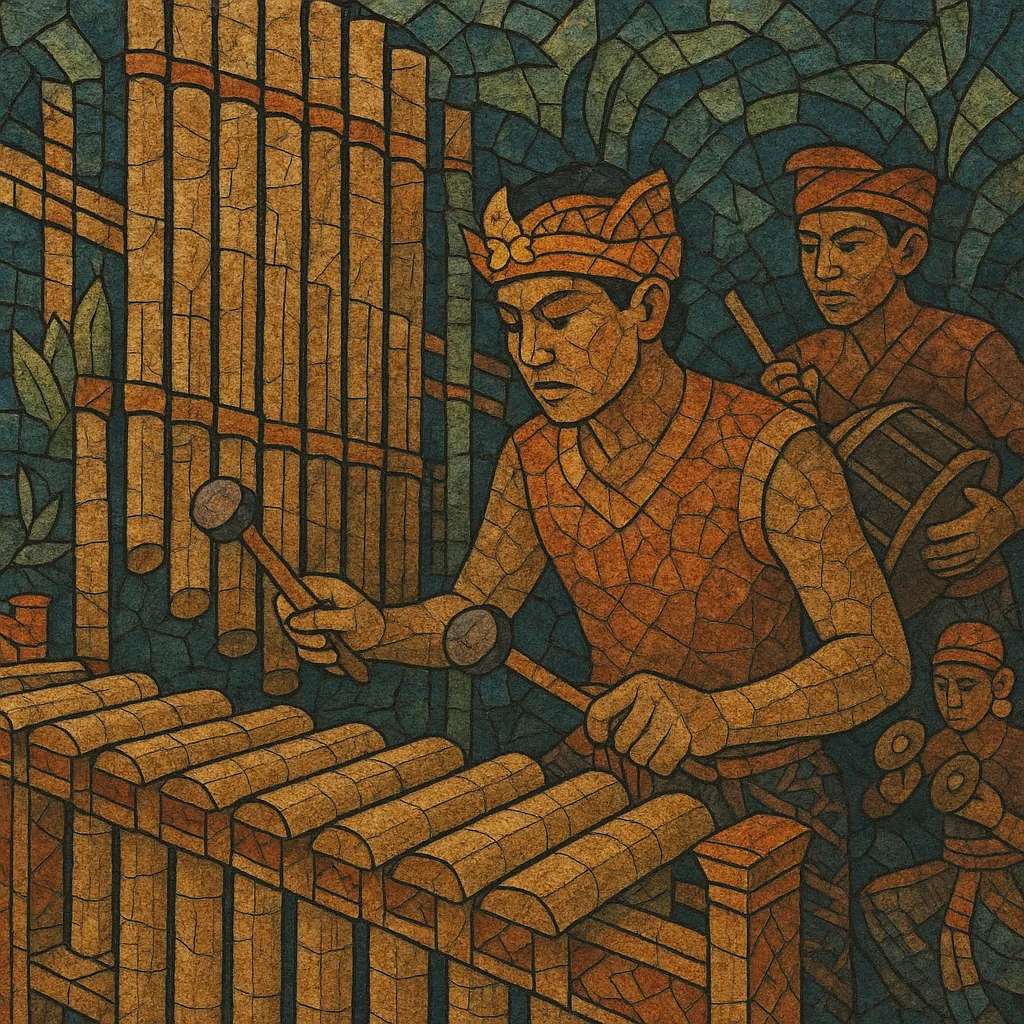Gamelan jegog is a Balinese bamboo gamelan tradition from Jembrana, West Bali, featuring towering, low‑pitched bamboo marimbas that can reach several meters in length. Its signature sound is a thunderous, buzzing bass combined with blisteringly fast interlocking patterns played on higher-pitched bamboo keys.
The ensemble typically uses a four-tone Balinese scale (saih pat) tuned in paired, slightly detuned courses to produce a characteristic beating effect called ombak. Powerful kendang (double-headed drums) lead the ensemble, while ceng-ceng (small cymbals) and timekeepers articulate form. The music ranges from stately, processional openings to virtuosic, high-energy passages and “battle” pieces (mebarung) pitting two jegog groups against one another.
Gamelan jegog emerged in the Jembrana Regency of West Bali in the early 1900s, with local bamboo instrument makers experimenting with exceptionally large, low-resonating bamboo keys. By the 1910s, village ensembles had standardized the distinctive four-tone tuning and instrumentation, establishing a unique sonic identity within the broader Balinese gamelan tradition.
Jegog developed as a community- and village-based tradition tied to social festivities, temple ceremonies, and staged spectacles. The hallmark “mebarung” format—competitive face-offs between two full jegog ensembles—helped cultivate a dazzling, athletic performance style featuring rapid interlocking (kotekan) figures, dramatic dynamic contrasts, and call-and-response textures across instrument choirs.
Repertoires typically begin with slower, majestic introductions before accelerating into tightly synchronized interlocking passages. The four-tone tuning (saih pat), the paired detuning (ombak), and the use of powerful bass bamboo instruments (the lowest, called jegog) produce a sound that is simultaneously seismic and shimmery, with the kendang directing tempo, cues, and transitions.
From the late 20th century onward, leading ensembles from Jembrana toured internationally, inspiring collaborations with contemporary composers and world music presenters. Jegog’s massive low-end, kinetic rhythms, and striking timbral palette have influenced cross-cultural projects and attracted sampling and adaptation in experimental and electronic contexts while remaining deeply rooted in West Balinese communal practice.


